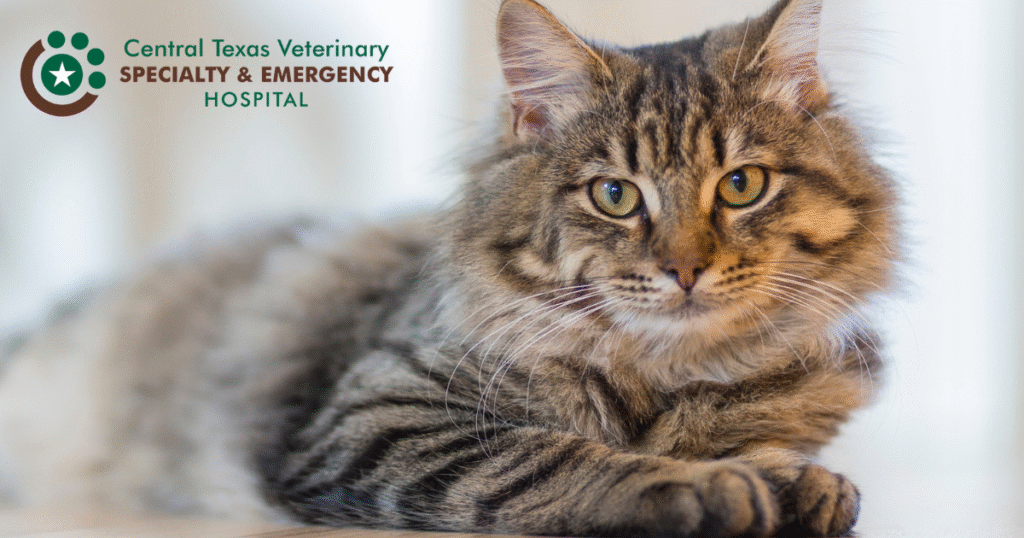As cat owners, we want to ensure our pets are happy and healthy. However, cats are often masters at hiding their discomfort, making it challenging to know when they are in pain. Unlike humans, who may express their pain verbally, cats tend to keep their struggles to themselves. Understanding the subtle signs of pain in your cat is essential for timely intervention and proper care.
In this blog, we’ll explore the common symptoms of feline pain, how to recognize when something is wrong, and what to do if you suspect your cat is in pain.
1. Changes in Behavior
A sudden change in your cat’s behavior is often among the first signs that something is wrong. It may indicate pain if your cat is typically social but suddenly becomes withdrawn. Cats in pain might hide more frequently, avoid interaction, or become unusually irritable.
- Withdrawing or Hiding: Cats in pain often seek solitude and may hide in dark or quiet places away from people and other pets.
- Aggression: A typically calm cat might become more aggressive if in pain. If your cat is more easily startled, irritable, or defensive, it could indicate something troubling them.
- Uncharacteristic Behavior: If your cat is more vocal than usual, such as meowing, growling, or yowling without a clear reason, it may signal pain. These vocalizations could be an attempt to express discomfort.
2. Changes in Grooming Habits
Cats are known for their grooming habits, and any change in how your cat cares for itself may indicate pain or discomfort.
- Over-Grooming: If your cat is obsessively grooming a specific area of its body, it could indicate pain or irritation. Over-grooming often occurs when a cat is attempting to soothe or relieve discomfort.
- Under-Grooming: Cats experiencing pain may cease grooming altogether. If your cat’s coat appears unkempt, matted, or dirty, it may be because they are unable to groom themselves due to pain.
- Sensitive to Touch: Cats in pain may respond negatively to touch or petting in certain areas. If your cat flinches, growls, or meows when you attempt to groom them or touch specific spots, it may signal discomfort.
3. Changes in Mobility
Pain can affect your cat’s ability to move comfortably. Keep an eye on how your cat walks, jumps, or climbs.
- Limping or Difficulty Moving: If your cat is limping or seems to have difficulty walking, it could be due to joint pain, arthritis, or an injury. Watch for changes in their usual movements—your cat may avoid jumping or struggle to reach places they once accessed easily.
- Stiffness or Hunched Posture: If your cat is walking stiffly or appears to be in a crouched, hunched position, this could indicate pain in the back, abdomen, or joints. A change in posture often signals discomfort.
4. Changes in Eating and Drinking Habits
A loss of appetite or difficulty eating can clearly indicate pain in cats. This may be related to dental issues, gastrointestinal discomfort, or other health concerns.
- Reduced Appetite: If your cat suddenly refuses to eat or drink, it may indicate that they are in pain. Cats experiencing mouth or dental pain may also avoid eating because chewing is painful.
- Difficulty Swallowing: If your cat appears to be having difficulty eating or swallowing, this may be a sign of mouth pain, throat issues, or even an upset stomach. You might observe them pawing at their face, drooling excessively, or vomiting.
5. Changes in Litter Box Habits
Painful urination or defecation may indicate that your cat is in distress. If your cat is avoiding the litter box or having difficulty using it, this could suggest discomfort.
- Straining to Urinate or Defecate: Cats suffering from urinary tract infections, kidney problems, or constipation may exhibit signs of discomfort when attempting to urinate or defecate. They might strain, whine, or even completely avoid the litter box.
- Accidents Outside the Litter Box: A cat in distress may have trouble using the litter box as usual. If your cat starts eliminating outside the box, it could be due to a physical issue like joint pain or a urinary problem.
6. Visible Signs of Injury or Illness
If your cat has an obvious injury or wound, the signs of pain may be more apparent. Look for:
- Limping or Difficulty Moving: As mentioned earlier, limping can indicate injury or pain in the limbs. If your cat refuses to walk or is favoring one leg, take it seriously.
- Swelling, Lumps, or Bruising: Check your cat’s body regularly for any signs of swelling, lumps, or bruises. These could indicate an injury, abscess, or infection that may cause pain.
- Changes in Breathing: If your cat is breathing rapidly, panting, or struggling to breathe, this could signal a serious medical condition causing pain. Cats in pain may breathe more heavily or with difficulty.
7. Excessive Vocalization
While some cats are more vocal than others, an increase in meowing, growling, or yowling may indicate that your cat is in pain. If the vocalizations are more frequent or appear more intense than usual, it’s important to take note.
What to Do If You Think Your Cat Is in Pain
If you notice any of these signs, it’s important to consult your veterinarian as soon as possible. A veterinarian can conduct a comprehensive examination and run tests to identify the cause of the pain and create an appropriate treatment plan.
- Visit the Vet: If your cat shows signs of pain, it’s best to schedule an appointment with your vet promptly. They can help diagnose the cause of the pain and suggest suitable treatment options.
- Manage Pain: If pain is diagnosed, your vet may prescribe pain relief medications or recommend alternative therapies such as acupuncture or physical therapy. Never give your cat human pain medication, as some medications like acetaminophen can be toxic to cats.
- Provide a Comfortable Environment: Until you can see your vet, ensure your cat has a quiet, comfortable place to rest. Provide soft bedding, and ensure they have easy access to food, water, and their litter box.
Final Thoughts
Cats are adept at concealing their pain, and it’s our duty as pet owners to be observant and responsive when we suspect something is amiss. By recognizing the signs of pain and discomfort, you can help ensure your cat receives the care they need. If you ever feel uncertain about your cat’s health or well-being, don’t hesitate to consult your veterinarian for guidance.

